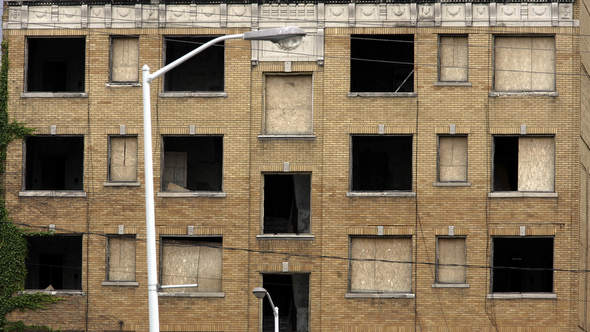|
|
Detroit files for bankruptcyMotown's blues continueJul 19th 2013,

WHEN General Motors filed for bankruptcy in 2009 many thought it was the end of what was once the world's largest carmaker. The company had run out of cash. Its share price had shrunk to $3. And its pension costs were crippling. But the declaration of bankruptcy helped GM turn things around, and quickly. It became stronger and leaner. Its share price rose. And last year it made $6 billion in profits.
Now its hometown, Detroit, is hoping for a similar turnaround. The city filed for the municipal version of bankruptcy on July 18th, becoming the largest American city ever to do so.

Once one of America's largest and richest cities, Detroit has been sputtering for half a century. Jobs have disappeared, along with people. Detroit's population dropped from 2m in the 1960s to barely 700,000 today (see chart). The unemployment rate is 16%, more than double the national and state rate. What is left of the tax-base is struggling and overburdened. Liabilities are enormous, some $17 billion, about $25,000 per resident.
In March, Ricky Synder, Michigan's governor, appointed Kevyn Orr, a bankruptcy lawyer, as the city's emergency manager. Two months later he declared the city insolvent. In June he released a plan to restructure the city's debt and obligations. One proposal would have the city sell its valuable art work. Another suggested reducing health benefits for retirees. Mr Orr declared a moratorium on the repayment of about $2 billion of unsecured debt. He said at the time, "What the average Detroiter needs to understand is that we're tapped out."
Detroiters probably knew that already. More than a third of residents live below the poverty level. The city is decaying around them. Nearly half of all streetlights don't work. Most of the city's parks have closed. The schools, also under emergency state control, are abysmal. Predictably, crime has gotten out of control. The murder rate is the highest it has been since the 1970s. The response time for 911 calls is nearly an hour. Only a third of the city's ambulances are in service.
Bankruptcy means city residents could face more service cuts. City workers, as well as retirees, will probably see their benefits slashed again. (In yet another sign of what ails the city, Detroit's two pension funds have sued Mr Orr and Mr Snyder in order to block them from cutting the pensions of current city employees.) Creditors also foresee pain. According to the Detroit News, the city's bankruptcy plan could be similar's to Mr Orr's restructuring proposal, which asked creditors to take pennies on the dollar.
Some residents worry about the stigma of bankruptcy, while neigbouring counties fear Detroit's' fiscal woes will affect their own ability to finance. But Mr Synder believes it is "the only viable option to address a problem that has been six decades in the making." GM, for its part, hopes bankruptcy will "mark a clean start for the city". In a statement the carmaker noted that a healthy auto industry will play a role in Detroit's comeback. That's certainly true, but let's hope the Motor City has learnt to diversify.
|